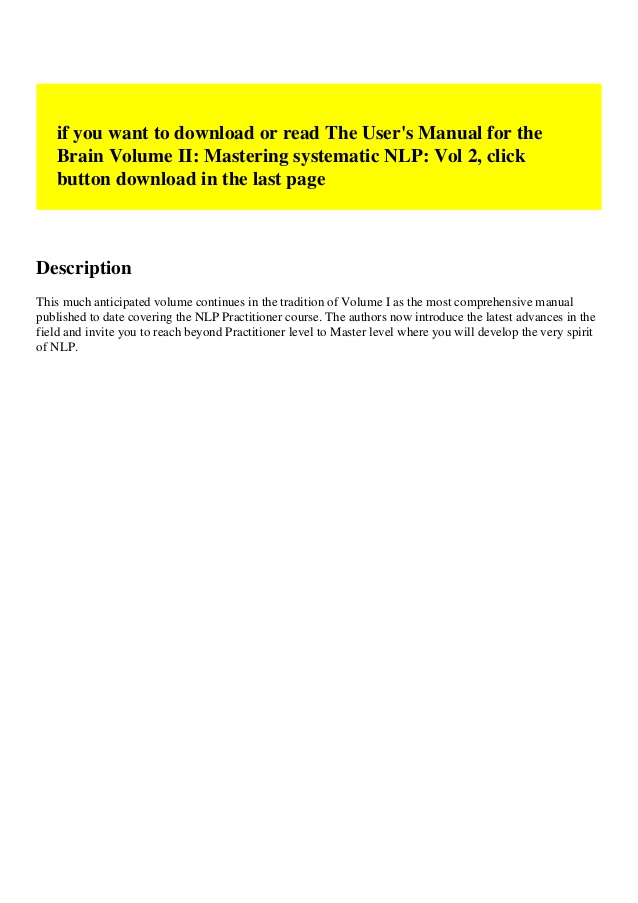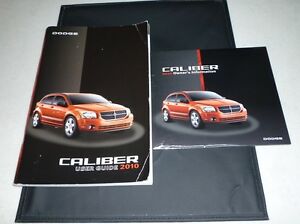The Representational System Preference Test
Representational System Practice
Predicates and Process Words
Predicate List
Matching Predicate Exercise
Eye Accessing Cues
Eye Position Chart
Lead System
Mapping Eye Patterns Exercises
Characteristics of The Primary Rep System
Submodalities-The Sub-Qualities of the Modalities
Chapter 2 - Connecting With People: Building and Maintaining Rapport
Sensory Acuity
Direction for Group Work
Sensory Acuity Exercise
How to Gain Rapport: Matching & Mirroring
Mirroring Exercises
Difference Between Matching & Mirroring
Matching and Mirroring an Angry Person
Knowing When You Have Rapport
Chapter 3 - Perceptual Positions
The Fourth Perceptual Position
The Fifth Perceptual Position
Perceptual Positions Exercise
Aligning Perceptual Positions
Chapter 4 - NLP Presupposition For Building Resourcefulness
Keeping the Context in Mind
NLP's Theoretical Assumptive Presuppostions
The NLP Presuppositional Beliefs
Mental Processing Presuppositions
The map is not the territory.
People respond according to their maps.
Meaning operates context dependently.
Mind-and-body inevitably & inescapably affect each other.
Individual skills function by developing & sequencing representational system.
Strategies
We respect the person's model of the world.
Presuppositions about human behavior/responses.
Person & behavior describe different phenomena.
Every behavior has utility and usefulness--in some context.
We evaluate behavior & change in terms of context & ecology.
Communicational Presuppositions
We cannot not communicate.
The way we communicate affects perception & reception.
The meaning of your communication lies in the response you get.
The one who sets the frame for the communication controls the communicating.
There is no failure, only feedback.
The person with the most flexibility controls things.
Resistance indicates the lack of rapport.
Learning--Choice--Change Presuppositions
People have the internal resources they need to succeed.
All communication should increase choice.
People make the best choices open to them when they act.
As response-able persons, we can run our brains & control our results.
Chapter 5 - NLP as a Communication Model: Excellence in Communicating
Three Qualities of Exceptional Communicators
Well-Formed Outcome Model
Stated Positively
Described in Sensory-Based Language
Self Initiated and Controlled
Appropriately Contextualized
Maintain Appropriate Secondary Gain
Build in Needed Resources
Ecological for the Whole System
Cartesian Coordinates
Additional Questions
Well-Formed Outcome Exercises
Overview of the NLP Communication Model
Facets of Communication
Communication Dimensions
Chapter 6 - Framing for Resourcefulness
Part I - Using Different Frames of Reference
Backtrack Frame
'As If' Frame
The 'Agreement' Frame
Part II - Dissociative Frame for Handling Criticism
The User's Manual For The Brain Vol 2 Pdf Youtube 2017
Part III - Dissociative Frame for Phobias and Trauma
Fast-Phobia Cure Simplified
Other Editing Tools
Chapter 7 - The Art of State Management
1st State Understanding
2nd State Awareness
3rd State Alteration
4th State Utilization
The Pattern
The Skill of Elicitation
Part II: The NLP Language Model
Chapter 8 - The Meta-Model of Language
Deep Structure/Surface Structure
Deletions
Distortions
Generalizations
Distortions
Nominalization
Mind Reading
Cause-Effect
Complex Equivalence
Presuppositions
Generalizations
Universal Quantifiers
Modal Operators
Lost Performative
Deletions
The Meta-Model of Language Chart
The Extended Meta-Model
Identity/Identification (Id.)
Static Words (Signal Words, SW)
Over/ Under Defined Terms (O/U)
Delusional Verbal Splits (DVS)
Pseudo-Words (PW)
Multi-Ordinality (MO)
Personalizing
Metaphor/Metaphoring
The MM of Language-Extended Chart
Linguistics Today
Chapter 9 - Hypnosis-Part I - The Misunderstood Nature of So-Called 'Hypnosis'
Defining Hypnosis
The Conscious/Unconscious Mind
Altered States and Trance
Trancing Ourselves to Face the Inner Darkness
The Feeling of Trance
'Hypnosis' As Poetry
The Six-Step Reframe Extended
So How Does 'Hypnosis' Work?
Chapter 10 - Hypnosis - Part II - The Milton Model
Tag Questions
Pacing Current Experience
Double Binds
Conversational Postulate
Extended Quotes
Selectional Restriction Violation
Phonological Ambiguities
Syntactic Ambiguity179
Scope Ambiguity
Punctuation Ambiguity
Utilization
Embedded Commands
Analogue Marking
Linkage Language
Conjunctions
Disjunction
Adverbial Clause or Implied Causatives
Summary Page of Milton Model Language
Steps In Communicating
Chapter 11 - Hypnosis - Part III - Storying, Metaphor, Analogy
Transderivational Searches
Displacing Referential Indexes
Isomorphism
Transforming Meaning Using Metaphor
Connecting Present State with Desired State
Is there a QR code for YI Smart Dash Camera? Are there any video tutorials available? How can I contact customer support? Where can I find and download the latest firmware? Where can I find and download the YI Smart Dash Camera app? Where can I find the user manual? Where can I find the user manual? Is there a QR code for YI Smart Dash Camera? Are there any video tutorials available? How can I contact customer support? Where can I find and download the latest firmware? Where can I find and download the YI Smart Dash Camera app? Where can I find the user manual? Basic Knowledge. Does YI Smart Dashcam have the Advanced Driver Assistance.
Utilizing Reframing within Metaphors
Unspecified Verbs, Nominalizations, Embedded Commands & Analogue Marking
Unspecified Verbs
Nominalizations
Embedded Commands
The Attractiveness of Metaphors
Boiler Factor Metaphor
Metaphor Analysis
Constructing a Metaphor
The Basics Steps in Generating a Metaphor
The User's Manual For The Brain Vol 2 Pdf Free Download
Metaphor Exercises
Building Associations
Likeness
Therapeutic Metaphor
Chapter 12 - Satir Categories: Adding Variety to your Communication
The Categories
Exercise
Example of Replies
Satir Categories in Public Speaking
Part III: The NLP Neurology Model
Chapter 13 - Anchoring: Managing Neurology
The Stimulus-Response Concept
What do we mean by 'An Anchor?'
Warning: 'Negative Anchors Present'
Anchoring Forgiveness
Consciously Anchoring in Therapy
View and Download Dodge Charger 2010 owner's manual online. Charger 2010 Automobile pdf manual download. Dodge 2010 charger srt owner's manual (442 pages). Dodge 2010 journey owner's manual (512 pages) Automobile Dodge 2010 Journey User Manual. 2010 journey (88 pages) Automobile Dodge 2010 Journey Manual (504 pages) Automobile Dodge 2010. View and Download Dodge 2010 Charger owner's manual online. Dodge 2010 Charger Owner's Manual. 2010 Charger Automobile pdf manual download.
Developing the Art of Anchoring Effectively
Four Keys to Anchoring
Uniqueness
State Intensity
Purity
Precision
Five Steps to Anchoring
Establish Rapport
Explain the Process
Elicit and Anchor the Desired Response
Break State
Test
Exercises
Anchoring States 1
Anchoring States 2
Transderivational Search (TDS)
TDS and Limiting Feelings
Uptime Self-Anchor
Intime Self-Anchor
Circle of Excellence
Collapsing Anchors: Integrating Parts
Change Personal History
Change Personal History Through the Eyes of The Meta-States Model
Collapsing Visual Anchors: Overcoming Doubt
Chaining Anchors
Stage Anchoring
The Visual Squash Pattern
Chapter 14 - Introduction to Submodalities
Submodality Checklist
Therapeutic Interventions Using Submodalities
SBMD Exploration Exercise
'The Cure' for Headaches and Other Uncomfortable Feelings
Mapping Across with SBMD
Time Line SBMD endspan -->How Your Brain Tells Time
Time Line SBMD Exercise
Godiva Chocolate Pattern
The Swish Pattern
Belief Formation Change Pattern
Grief/Loss Pattern
Part IV: Advanced Neuro-Linguistic Programming
Chapter 15 - Strategies - Part 1 - Identifying the Pieces of Subjectivity
NLP -- A Model of Models
The Philosophy/Epistemology of NLP
The Components of Subjectivity
Map-Making: Creating Maps for Charting Territory
Deletion
Generalization
Distortion
Modeling that Creates Strategy Maps
Strategies - Part 2 - The NLP Strategy Model
'Once Upon a Time There Was a Stimulus- Response Model . . .'
'And then the S-R Grew Up Into a T.O.T.E.'
NLP Enriched the TOTE and Created 'Strategies'
Mastering 'The Strategy Model'
Strategy Elicitation
Unpacking Strategies as They Zoom By
Designing Strategies
Designing New and Better Strategies
Utilizing Strategies
Installation of Strategies
New Distinctions
Strategies - Part 3 - More on Strategies
Strategy Elicitation
Eliciting Decision Strategies
Strategy Elicitation through Backtracking
Potential Problems with Decision Strategy
Pointers in Elicitation
Exercises
The Spelling Strategy
Decision Strategy
Motivation Strategy
Learning Strategy
Chapter 16 - An Introduction to The Techniques of Time Line Therapy™
Anglo-European and Arabic Time
Difficulty Eliciting the Time Line
Parts Reframe
Through Time and In Time
Developmental Periods
Imprint Period
Modeling Period
Socialization Period
Presenting Problem
Memory Management: Experiencing Your Time Line
Deleting Memories with the Fast Phobia Cure
Replacing Memories with the Swish Pattern
Steps Into The Techniques of Time Line Therapy™
Establish Rapport
Gathering Information
Going From Effect to Cause
Dissociate From the Problem
Scramble the Strategy
Discover the Root Cause
Letting Go of Negative Emotions: Using The Techniques of Time Line Therapy™
Experiencing Your Time Line: Letting Go of Negative Emotions
When the Emotions Won't Let Go
When the Emotions Haven't Disappeared During Testing
Bibliography
Glossary of Terms
The User's Manual for the Brain $45.00 + $5.00 S&H = $50.00
Online Ordering— E-mail me a list of the products you want including your name, shipping address and telephone number and I will send you an invoice with the full cost of the products including shipping charges. Within the invoice that I will send you will be a link to PayPal where you can use your own PayPal account to pay for the products or you can use your own personal charge card. You may launch your e-mail program by clicking on the 'Order Now' button to the right:
Shipping and Handling in the USA is generally $5 for the first book plus $2 per each additional book. For orders outside the USA, send an E-mail to us with the books you wish to order plus your shipping address and we will notify you promptly of the shipping charges. Air mail charges vary dramatically from country to country.
or
Pay with your own personal PayPal account.
or
You can contact me via phone, fax, email, or snail mail and I can accept your personal Master Card, Visa Card and/or Discover Card directly.
Send check or money order to:
Bobby G. Bodenhamer
1516 Cecelia Dr.
Gastonia, NC 28054
704.864.3585
Fax: 704.864.1545
©1997-2006 Bobby G. Bodenhamer and L. Michael Hall. All rights reserved.



